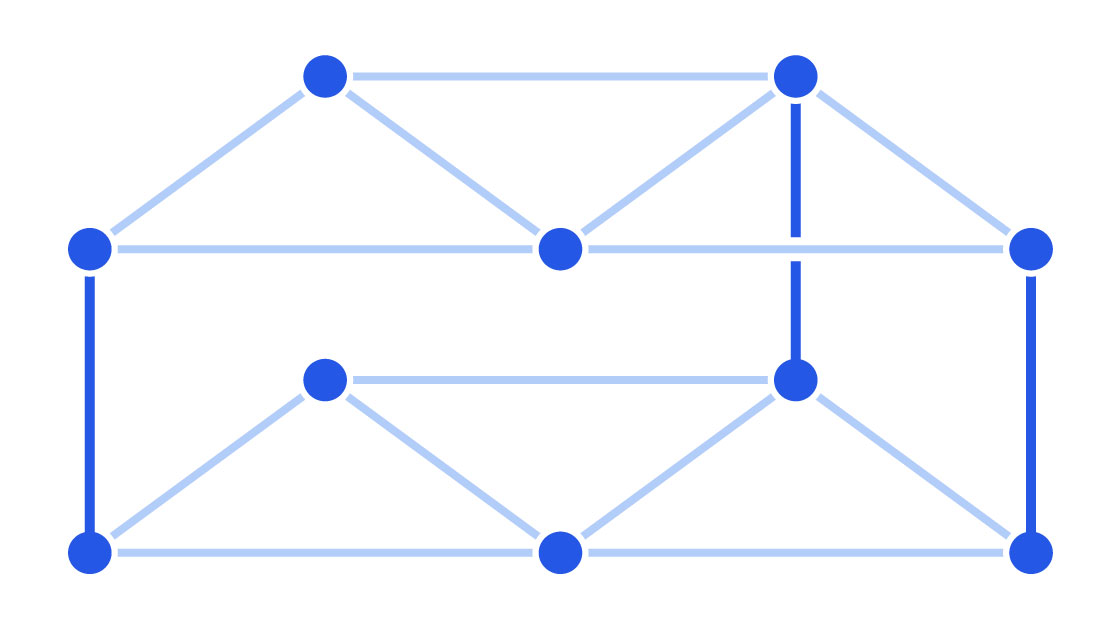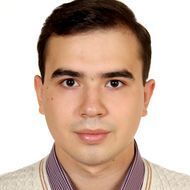Scientists Disprove Bunkbed Conjecture

Mathematicians from Russia, including two HSE graduates, have disproven a well-known mathematical conjecture that, despite lacking solid proof, had been considered valid for 40 years. The ‘Bunkbed Conjecture’ belongs to percolation theory—a branch of mathematics that studies the formation of connected structures in independent environments.
The hypothesis was proposed in the 1980s by Dutch physicist Pieter Kasteleyn, who aimed to mathematically describe how liquids seep through porous surfaces, such as water saturating a sponge.
The conjecture is based on random connections between vertices in an imaginary graph resembling a bunkbed. It posits that the probability of a connection forming between two vertices on the same level is higher than the probability of a connection forming between levels.

While this statement seems intuitively true, no convincing proof had been found to confirm or refute it until recently. Sceptics argued that the claim was too general to hold true in all cases.
Mathematics typically focuses on proving the validity of statements, with disproofs being relatively rare. However, a team of Russian mathematicians—Igor Pak, Nikita Gladkov, and Aleksandr Zimin—managed to find a counterexample that invalidated the conjecture.
‘Actually, my colleague Nikita Gladkov and I first encountered the “bunkbed” concept during our freshman year at HSE. We were dorm roommates, and our room actually had a bunkbed,’ joked Aleksandr Zimin. ‘With this conjecture, we understood that it holds true for most cases. But we were curious—are there rare cases where it fails?’
Initially, the team tried to find a counterexample using machine learning methods. They trained a neural network to identify potential connections in graphs and attempted to explore all possible configurations. However, for graphs with more than nine vertices, the number of possible connections grew exponentially, quickly exceeding computational limits. No proof was found.
The researchers then adapted methods from hypergraph theory, where a disproof of the Bunkbed Conjecture already existed, to classical graphs. They constructed a highly complex structure containing thousands of vertices and edges. In this graph, the probability of a connection forming between the upper and lower levels was slightly higher than the probability of a connection forming on the lower level, thereby disproving the conjecture.

‘My co-authors Igor Pak and Nikita Gladkov—who are currently working at UCLA—and I complemented each other perfectly on this project. I prefer using numerical methods. In my opinion, to truly understand a problem, you need to be able to program it and explain it to a computer. Nikita, on the other hand, takes a different approach and prefers relying on a more abstract, intuitive level,’ says Aleksandr Zimin, one of the authors of the paper and a postgraduate student at the HSE Faculty of Mathematics.

Aleksandr Zimin
‘The conjecture resisted disproof for a long time—or perhaps no one wanted to disprove it because it was beautiful and elegant. However, in my view, disproving it does not destroy its beauty; rather, it proves that the world is far more interesting and complex than we thought,’ Zimin says.
The discovered counterexample raises fundamental questions for science about whether intuition can be relied upon, how critical thinking should be applied in mathematics, and how probabilistic evidence-based proofs should be interpreted.
See also:
Habits Stem from Childhood: School Years Found to Shape Leisure Preferences in Adulthood
Moving to a big city does not necessarily lead to dramatic changes in daily habits. A study conducted at HSE University found that leisure preferences in adulthood are largely shaped during childhood and are influenced by where individuals spent their school years. This conclusion was drawn by Sergey Korotaev, Research Fellow at the HSE Faculty of Economic Sciences, from analysing the leisure habits of more than 5,000 Russians.
Russian Scientists Reconstruct Dynamics of Brain Neuron Model Using Neural Network
Researchers from HSE University in Nizhny Novgorod have shown that a neural network can reconstruct the dynamics of a brain neuron model using just a single set of measurements, such as recordings of its electrical activity. The developed neural network was trained to reconstruct the system's full dynamics and predict its behaviour under changing conditions. This method enables the investigation of complex biological processes, even when not all necessary measurements are available. The study has been published in Chaos, Solitons & Fractals.
‘HSE Is a Very Good Place: Intelligent Students, a Strong Teaching Staff’
Since March 2025, the HSE Faculty of Mathematics has welcomed a leading Russian mathematician, Doctor of Physical and Mathematical Sciences, Honorary Professor at the University of Edinburgh, National Professor of China, and recipient of the Lyapunov Prize—Sergey Kuksin. In an interview with the HSE News Service, he spoke about the role of the individual in mathematics, KAM theory, and why analysis is so relevant today.
Scientists Propose Novel Theory on Origin of Genetic Code
Alan Herbert, Scientific Supervisor of the HSE International Laboratory of Bioinformatics, has put forward a new explanation for one of biology's enduring mysteries—the origin of the genetic code. According to his publication in Biology Letters, the contemporary genetic code may have originated from self-organising molecular complexes known as ‘tinkers.’ The author presents this novel hypothesis based on an analysis of secondary DNA structures using the AlphaFold 3 neural network.
See, Feel, and Understand: HSE Researchers to Explore Mechanisms of Movement Perception in Autism
Scientists at the HSE Cognitive Health and Intelligence Centre have won a grant from the Russian Science Foundation (RSF) to investigate the mechanisms of visual motion perception in autism. The researchers will design an experimental paradigm to explore the relationship between visual attention and motor skills in individuals with autism spectrum disorders. This will provide insight into the neurocognitive mechanisms underlying social interaction difficulties in autism and help identify strategies for compensating for them.
Scholars Disprove Existence of ‘Crisis of Trust’ in Science
An international team of researchers, including specialists from HSE University, has conducted a large-scale survey in 68 countries on the subject of trust in science. In most countries, people continue to highly value the work of scientists and want to see them take a more active role in public life. The results have been published in Nature Human Behaviour.
Education System Reforms Led to Better University Performance, HSE Researchers Find
A study by researchers at the HSE Faculty of Economic Sciences and the Institute of Education have found that the number of academic papers published by research universities in international journals has tripled in the past eight years. Additionally, universities have developed more distinct specialisations. Thus, sectoral universities specialising in medical, pedagogical, technical, and other fields are twice as likely to admit students to target places. The study has been published in Vocation, Technology & Education.
Scientists Record GRB 221009A, the Brightest Gamma-Ray Burst in Cosmic History
A team of scientists from 17 countries, including physicists from HSE University, analysed early photometric and spectroscopic data of GRB 221009A, the brightest gamma-ray burst ever recorded. The data was obtained at the Sayan Observatory one hour and 15 minutes after the emission was registered. The researchers detected photons with an energy of 18 teraelectronvolts (TeV). Theoretically, such high-energy particles should not reach Earth, but data analysis has confirmed that they can. The results challenge the theory of gamma radiation absorption and may point to unknown physical processes. The study has been published in Astronomy & Astrophysics.
Chemists Simplify Synthesis of Drugs Involving Amide Groups
Chemists from HSE University and the Nesmeyanov Institute of Organoelement Compounds of the Russian Academy of Sciences (INEOS RAS) have developed a new method for synthesising amides, essential compounds in drug production. Using a ruthenium catalyst and carbon monoxide under precisely controlled reaction conditions, they successfully obtained the target product without by-products or complex purification steps. The method has already been tested for synthesising a key component of Vorinostat, a drug used to treat T-cell lymphoma. This approach could lower the cost of the drug by orders of magnitude. The paper has been published in the Journal of Catalysis. The study was supported by the Russian Science Foundation.
Scientists Examine Neurobiology of Pragmatic Reasoning
An international team including scientists from HSE University has investigated the brain's ability to comprehend hidden meanings in spoken messages. Using fMRI, the researchers found that unambiguous meanings activate brain regions involved in decision-making, whereas processing complex and ambiguous utterances engages regions responsible for analysing context and the speaker's intentions. The more complex the task, the greater the interaction between these regions, enabling the brain to decipher the meaning. The study has been published in NeuroImage.


